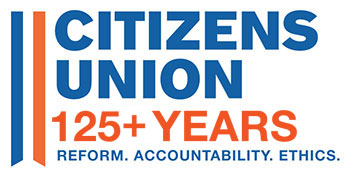Originally Published: February 5, 2013
Unprecedented transparency of decision-making can dispel cynicism and increase public confidence
Staff Memorandum’s robust disclosure can serve as a model for other jurisdictions
Citizens Union today praised the City Districting Commission (Commission) for releasing a staff memorandum that provides for unprecedented transparency and robust disclosure of its decision-making that accompanies its latest draft of city council district maps. That the Commission is providing its maps in advance of its February 6th public meeting, at which it will be voting on the final maps, is also worthy of commendation. While stakeholders and community groups may agree or disagree on the decisions that are being made, New Yorkers now know, for the first time, what is behind the thinking of the Commission as it draws these final lines. Such transparency with astounding detail can do much to dispel public cynicism that only partisan politics drives these decisions and to build public confidence that the plan is a fair one that balances many interests, some of which are in conflict with one another.
The release of the staff memorandum follows recommendations made by Citizens Union in a letter to the Commission to provide for detailed information regarding how the Commission drew each district, specifically addressing its use of specific criteria in the City Charter, public input received, and compliance with the Voting Rights Act.
While independent state redistricting bodies in California and Iowa provide for written or statistical analyses of each district that are among the most detailed in the nation, the memo provided by the Commission staff provides a more complete analysis of its decision-making. The memo explains the requirements of the U.S. Constitution, federal Voting Rights Act and the New York City Charter, and provides an analysis of city-wide and borough-wide population shifts. It also importantly contains an analysis of internal factors that influence the drawing of each council district, such as population changes, voting rights considerations, preservation of communities and neighborhoods, and requests made in public testimony, as well as the external factors such as neighboring districts that may have a ripple effect on the drawing of adjacent districts.
This welcomed step not only corrects the Commission’s earlier stumbles when it released its last set of plans which appeared to bend to the political interests of individuals, but also adds to the laudable record built by the Commission. Its previous transparency initiatives included providing map-making software to the public and webcasting its meeting; the Commission has now improved this record through this important release of written rationales for the drawing of city council districts.
The Commission’s staff memo raises the bar nationally for transparency for a process often shrouded in secrecy and should serve as a model for other jurisdictions. With detailed information provided in the memo about City Charter principles followed, adherence to the Voting Rights Act, and responses to public comments, New Yorkers will have access to needed information about how the Districting Commission has addressed issues of importance to their communities.
